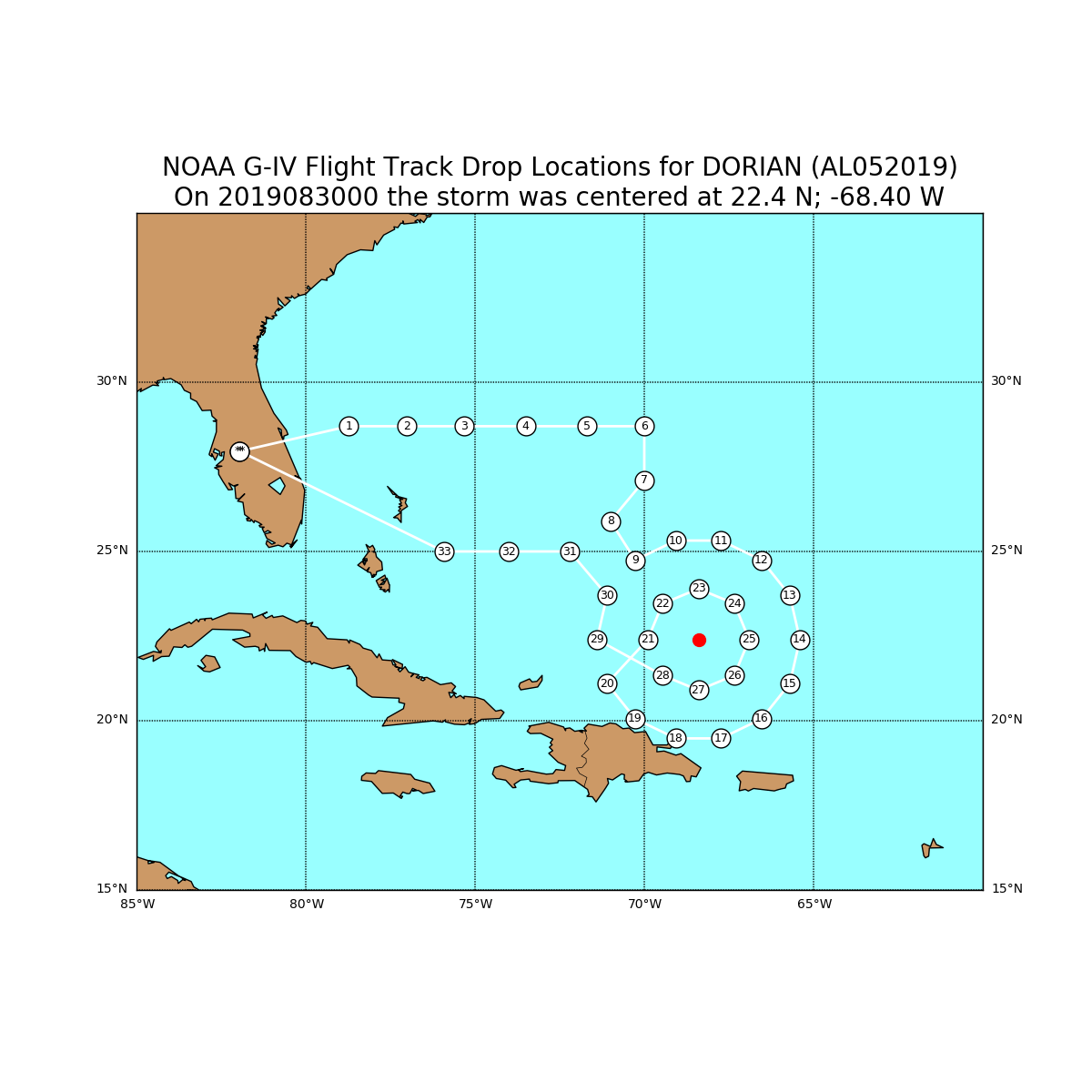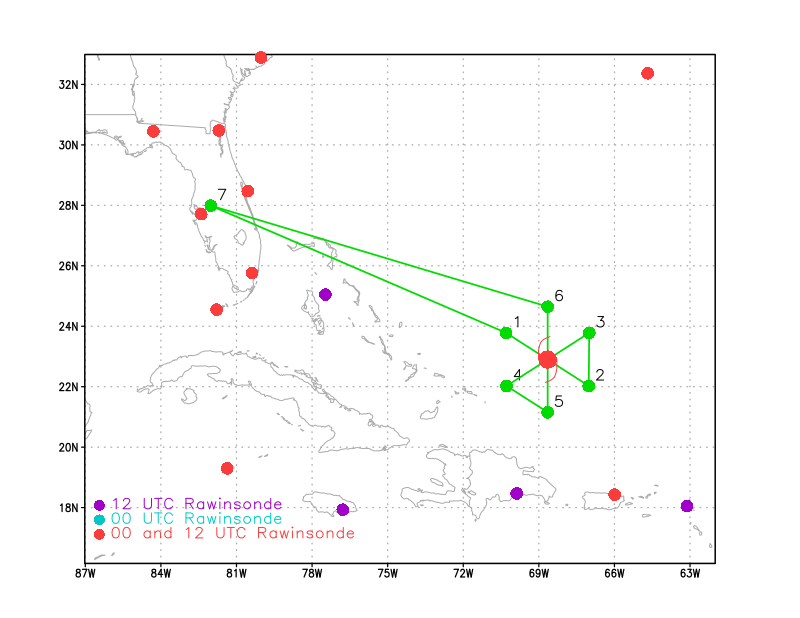NOAA49 is currently conducting a synoptic surveillance mission around Hurricane Dorian, and NOAA42 is in the midst of its next EMC-tasked mission into the storm. The only change is that NOAA 42 will be taking atmospheric observations when it flies over the NOAA Hurricane Underwater Gliders. Since it is the warm ocean water below Dorian that provides the fuel for intensification, the gliders are sampling the upper ocean in the path of Dorian to assess how better observations there can improve intensity forecasts. You can find current locations of and observations from the gliders at https://www.aoml.noaa.gov/phod/goos/gliders/observations.php. Details on the current missions can be found in yesterday’s update.

The current missions are the first in a series that will be keeping us busy for quite a while. First, NOAA49 is tasked to depart Lakeland at 0530 UTC early Thursday for another Synoptic Surveillance mission around Dorian. The mission will be round-robin, Lakeland to Lakeland, and will last approximately 8.5 hours. The aircraft will again perform two circumnavigations around Dorian and will also sample the upper-level low to Dorian’s northwest. The purpose of the mission is now to gather dropwindsonde data to improve model forecasts before potential impacts in the U. S. mainland.  Then, NOAA42 will conduct another EMC-tasked mission in Damian. NOAA42 will take off from Lakeland at 0800 UTC and recover back there about 8 hours later after sampling the core with dropwindsondes and Doppler radar to improve model forecasts. The aircraft will also obtain the 1130 and 1730 UTC fixes (location and intensity observations) for the National Hurricane Center during the flight.
Then, NOAA42 will conduct another EMC-tasked mission in Damian. NOAA42 will take off from Lakeland at 0800 UTC and recover back there about 8 hours later after sampling the core with dropwindsondes and Doppler radar to improve model forecasts. The aircraft will also obtain the 1130 and 1730 UTC fixes (location and intensity observations) for the National Hurricane Center during the flight.
NOAA49 is then tasked to depart Lakeland at 1730 UTC Thursday afternoon for another Synoptic Surveillance mission around Dorian. The mission will be round-robin, Lakeland to Lakeland, and will last approximately 8 hours. The aircraft will again perform two circumnavigations around Dorian and will also sample the upper-level low to Dorian’s northwest and the ridge to its north. The purpose of the mission is now to gather dropwindsonde data to improve model forecasts before potential impacts in the U. S. mainland.

NOAA42 will conduct another EMC-tasked mission in Damian. NOAA42 will take off from Lakeland at 2030 UTC and recover back there about 8 hours later after sampling the core with dropwindsondes and Doppler radar to improve model forecasts.

And, the current plan is to continue with two missions per day with each aircraft, keeping us quite busy.
For the latest information about tropical cyclones and other weather systems, please visit the NOAA/NWS/National Hurricane Center.
To access updates on IFEX and other HRD activities via Facebook, Twitter, or RSS feed, check out the NOAA/AOML/HRD page.
To directly access updates on IFEX HFP Operations via our WordPress blog on the web, check the site: https://noaahrd.wordpress.com/category/ifex-hurricane-field-program/
DISCLAIMER: The above discussion is intended to provide a brief summary of recent and future HRD Hurricane Field Program Operations. Any use of this material beyond its original intent is prohibited without permission of the HRD Director. Media inquiries should be directed to Erica Rule (305-361-4541) or Erica.Rule@noaa.gov, Monica Allen (301-734-1123) or Monica.Allen@noaa.gov.